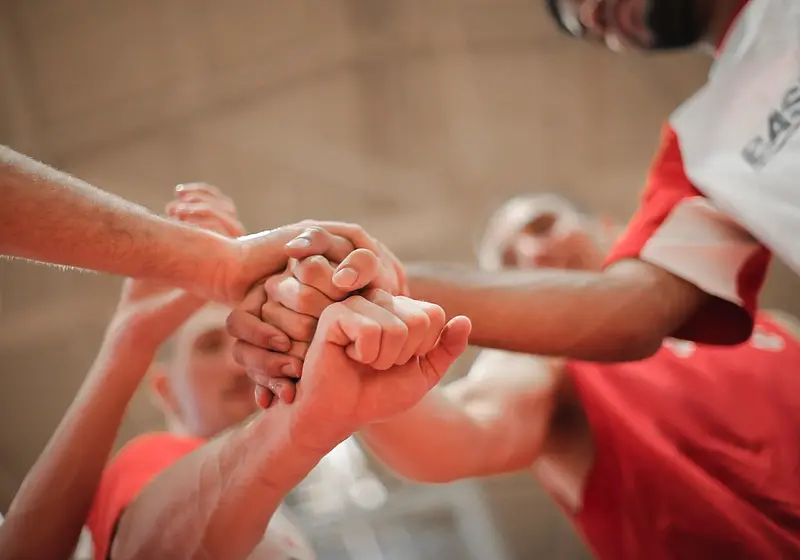Bone marrow failure diseases can become serious and require critical attention- and the Aplastic Anemia and MDS International Foundation is here to support those affected and raise awareness.
AAMDS is "the world's leading nonprofit health organization dedicated to supporting patients and families living with aplastic anemia, myelodysplastic syndrome (MDS), paroxysmal nocturnal hemoglobinuria (PNH), and related bone marrow failure diseases."
I had the great honor of speaking with the CEO of Aplastic Anemia and MDS International Foundation, Janice Frey- Angel, on the various types of diseases, the mission of the foundation, how you can get involved, and more.

Image Credit: Aplastic Anemia and MDS International Foundation
Let us slide into your dms 🥰
Get notified of top trending articles like this one every week! (we won't spam you)About Aplastic Anemia
KJ: What exactly is Aplastic Anemia?
Aplastic anemia is a rare but serious blood disorder that occurs when your bone marrow cannot make enough new blood cells for your body to work normally.
Aplastic anemia occurs because of damage to stem cells inside bone marrow, which is the sponge-like tissue within your bones. As a result, the bone marrow makes fewer red blood cells, white blood cells, and platelets. Acquired aplastic anemia is usually considered an autoimmune disease.
Normally, your immune system attacks only foreign substances. When your immune system attacks your own body, you are said to have an autoimmune disease.
Hereditary aplastic anemia is passed down through the genes from parent to child. It is usually diagnosed in childhood and is much less common than acquired aplastic anemia. People who develop hereditary aplastic anemia usually have other genetic or developmental abnormalities that cause the aplastic anemia. Each year, between 600 and 900 people in the U.S. learn that they have aplastic anemia.

Image Credit: Aplastic Anemia and MDS International Foundation
Take the Quiz: Are you "Delulu"?
Are you grounded in reality, or letting your overthinking run the show?
Paroxysmal Nocturnal Hemoglobinuria
KJ: What exactly is Paroxysmal Nocturnal Hemoglobinuria?
PNH, or Paroxysmal nocturnal hemoglobinuria, is a rare blood disease that causes red blood cells to break apart - which is called hemolysis.
PNH happens because of a change (mutation) in the PIG-A gene of a single stem cell in the bone marrow. This gene controls the creation of substance that helps certain proteins to stick to blood cells. Therefore, any blood cells created by this mutant bone marrow stem cell are abnormal.
Without PIG-A, important proteins cannot connect to the cell surface and protect the cell from substances in the blood called complement. As a result, red blood cells break down too early. The red cells leak hemoglobin into the blood, which can pass into the urine.
This can happen at any time but is more likely to occur during the night or early morning. Experts estimate between 400 and 500 cases are diagnosed in the U.S. each year.

Image Credit: Aplastic Anemia and MDS International Foundation
The Connection to Leukemia
KJ: Could you tell us more about the relation to the above diseases and the various forms of leukemia?
More than 10 out of every 100 people with aplastic anemia will develop PNH. In addition, some people with PNH will develop aplastic anemia. People with PNH can share symptoms with aplastic anemia patients, such as low blood cell counts.
On average, 2 out of 100 people with PNH go on to develop myelodysplastic syndrome (MDS) and approximately 10% of people with aplastic anemia will develop MDS.
Myelodysplastic Syndromes or Myelodysplasia is a group of disorders in which bone marrow cells do not develop into mature blood cells. Instead, these cells stay within the bone marrow in an immature state. Experts agree that MDS is a cancer of the blood and bone marrow. The exact number of people living with MDS is unknown, but studies suggest that 12,000 to 15,000 MDS cases are newly diagnosed annually in the U.S., and an estimated 50,000 to 75,000 people currently live with MDS.

Image Credit: Aplastic Anemia and MDS International Foundation
The cause of most MDS cases is unknown. Doctors refer to this as de novo MDS. De novo MDS cannot be passed down through genes from parent to child or transmitted from person to person.
Treatment Related or Secondary MDS develops from treatment of other cancers. This form of MDS can be severe and harder to treat than de novo MDS.
On average, treatment related MDS happens 5 to 7 years following treatment for other cancers. Overall, the chance of developing MDS because of another cancer treatment is very low. Less than 1 in 100 people treated for other cancers develop MDS. The risk increases for patients who have had multiple rounds of chemotherapy and radiation therapy or have had a bone marrow transplant.
Over time, some cases of MDS become Acute Myeloid Leukemia (AML). AML is a cancer of the white blood cells. It is defined as having more than 20 out of every 100 white blood cells in the bone marrow which are immature white blood cells called blasts. It is estimated one third of MDS patients will develop AML.

Image Credit: Aplastic Anemia and MDS International Foundation
The History & Creation
KJ: How did the Aplastic Anemia and MDS International Foundation come to be created?
In 1983, Ivan Fisher, eight-year-old son of Bart and Margaret Fisher, died of aplastic anemia at the Johns Hopkins Oncology Center. At that time there was a need for a national organization dedicated to aplastic anemia research, patient and family outreach, and the establishment of a national bone marrow registry to match patients in need of a bone marrow transplant with potential matching donors.
Bart and Margaret set out to meet those needs by establishing the Aplastic Anemia Foundation of America (AAFA), and by applying to the IRS for approval of the foundation as a charitable organization.

Image Credit: Aplastic Anemia and MDS International Foundation
The Mission
KJ: What is the mission of the Aplastic Anemia and MDS International Foundation?
The Aplastic Anemia & MDS International Foundation is the world's leading nonprofit health organization dedicated to supporting patients and families living with aplastic anemia, myelodysplastic syndrome (MDS), paroxysmal nocturnal hemoglobinuria (PNH), and related bone marrow failure diseases.
The Foundation provides answers, support, and hope to thousands of patients and their families around the world around.
Finding Treatment & Cure
KJ: How does the organization help find a treatment or cure for the disease through research?
For over 30 years, AAMDSIF has provided financial support for research that leads to new insights into the causes of bone marrow failure diseases and to the development of new therapeutic approaches. Since 1989, we have awarded over $5 million in funding 94 grantees.

Image Credit: Aplastic Anemia and MDS International Foundation
For Those Affected
KJ: What are some of the services and programs for individuals affected by aplastic anemia and other diseases?
AAMDSIF provides answers and support through our webinars, conferences and educational materials which are available on-line and by mail. All our services are free to patients and their families.
Our patient support staff is available by phone, email and chat to answer questions and connect patients with other patients who want to provide support to each other. We also facilitate virtual support groups for patients and caregivers. Because our diseases are so rare, providing community is important to those diagnosed and living with our diseases.
Building Public Awareness
KJ: How does the Aplastic Anemia and MDS International Foundation build public awareness?
We build public awareness through social media, email campaigns, newsletters and primarily through our website which is visited by 1,000,200 people per year.

Image Credit: Aplastic Anemia and MDS International Foundation
The Biggest Accomplishment
KJ: What would be considered as the biggest accomplishment of the Aplastic Anemia and MDS International Foundation?
The biggest accomplishment would be that starting out in 1983 our diseases were a death sentence to those diagnosed. Today all three of our diseases have treatments and many more people are living with our diseases.
Proud To Be
KJ: What makes you the proudest to be with this organization?
I am proud to be part of an organization that contributes to saving peoples lives, whether by getting them to the best physician/treatment or by providing them with the right questions to ask their treating physicians. We also impact peoples lives by funding research that helps find treatments and hopefully a cure someday.

Image Credit: Aplastic Anemia and MDS International Foundation
How Can You Get Involved?
KJ: As a teen and young adult-focused magazine, are there ways for Gen Z to get involved within the Aplastic Anemia and MDS International Foundation?
Any one of you can get involved by organizing a walk or run or any competition that you enjoy to raise awareness and funds for Aplastic Anemia, MDS and PNH. Let us know if you are interested and we can help you get your event started.
Thank You & Keep Up
A huge thank you to the Aplastic Anemia and MDS International Foundation for this important interview and for sharing these words with us!
Be sure to connect with AAMDS on social media at YouTube, Instagram, and Twitter.












